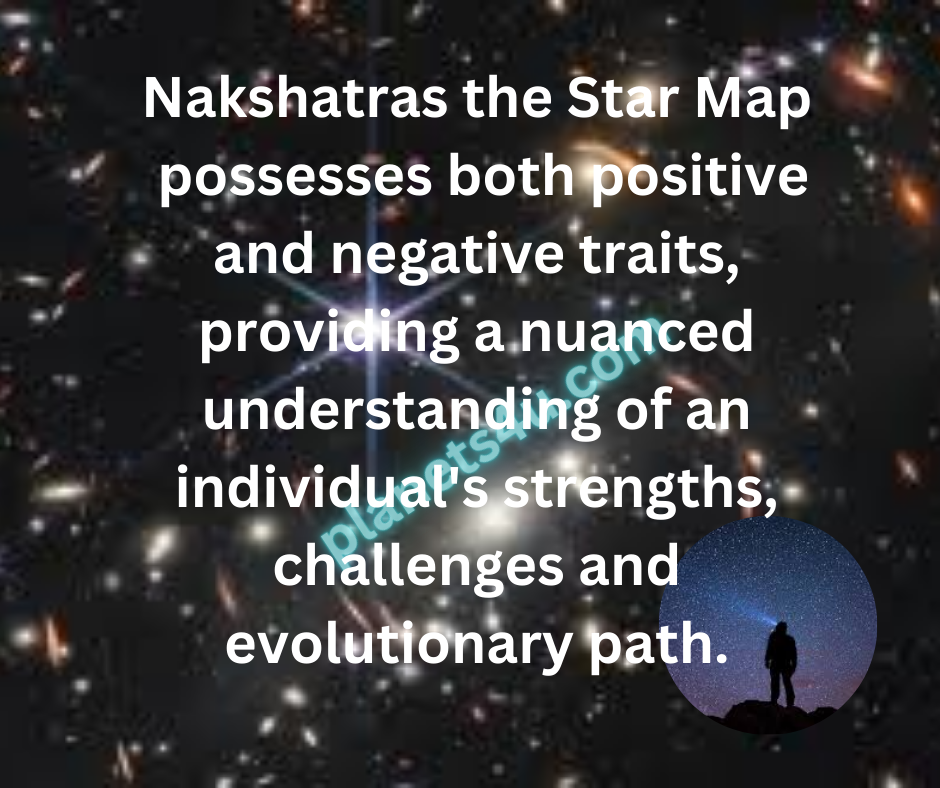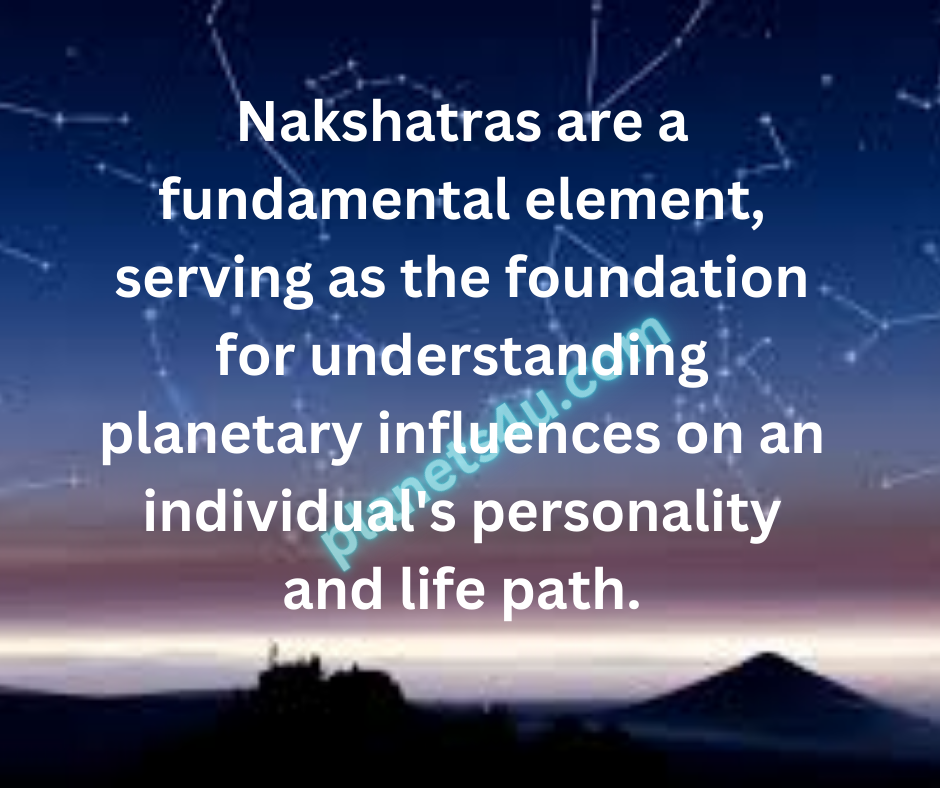The 27 Nakshatras and Influences on Your Life. Discover the profound significance of the 27 Nakshatras in Vedic Astrology. Learn about the ancient system of understanding cosmic energies that shape our personalities and life paths. Explore each Nakshatra’s unique traits, strengths, weaknesses, and how they can influence your destiny. This ancient system offers a map for understanding your soul’s journey.

In Vedic astrology, the 27 nakshatras or lunar mansions represent the constellations that the Moon travels through during its cycle. Each nakshatra has unique characteristics that influence an individual’s personality and life path. Understanding these traits can provide valuable insights into our strengths, weaknesses, and potential.
The 27 Nakshatras and Influences on Your Life: the Strengths and Challenges
1. Ashvini (Ashwini Kumaras, Head of the Horse):
Positive: Pioneering, courageous, healing abilities, energetic, enthusiastic, quick-witted.
Negative: Impatient, impulsive, prone to accidents, restless, easily bored.
2. Bharani (Yama, The Nakshatra of Restraint):
Positive: Creative, passionate, transformative, strong willpower, independent, fearless.
Negative: Destructive tendencies, prone to extremes, secretive, vindictive, possessive.
3. Krittika (Agni, The Nakshatra of Fire):
Positive: Leadership qualities, independent, energetic, nurturing, protective, passionate, driven, ambitious.
Negative: Critical, impatient, sharp-tongued, prone to anger and aggression.
4. Rohini (Brahma, The Nakshatra of Ascent):
Positive: Nurturing, grounded, practical, patient, methodical, sensual, enjoys material comforts.
Negative: Possessive, materialistic, stubborn, resistant to change, prone to jealousy.
5. Mrigashira (Soma, The Nakshatra of Seeking):
Positive: Inquisitive, curious, communicative, adaptable, seeks knowledge and experience, enjoys exploring new horizons.
Negative: Indecisive, restless, prone to anxiety, can be scattered and lacking focus.
6. Ardra (Rudra, The Nakshatra of Sorrow):
Positive: Compassionate, understanding, intuitive, seeks depth and meaning, transformative.
Negative: Prone to emotional turmoil, moody, self-destructive tendencies, can attract misfortune.
7. Punarvasu (Aditi, The Nakshatra of Renewal):
Positive: Nurturing, compassionate, generous, humanitarian, seeks harmony and balance, enjoys simple pleasures.
Negative: Can be overly trusting and naive, prone to manipulation, avoids conflict.
8. Pushya (Brihaspati, The Nakshatra of Nourishment):
Positive: Nurturing, generous, protective, prosperous, good with finances, enjoys traditional values.
Negative: Can be overly cautious, rigid in beliefs, prone to prejudice and bigotry.
9. Ashlesha (Naga, The Nakshatra of Coiling):
Positive: Intense, penetrating, insightful, determined, magnetic, good at research and investigation.
Negative: Secretive, manipulative, cunning, jealous, possessive, prone to suspicion.
10. Magha (Pitris, The Nakshatra of Honor):
Positive: Ambitious, leadership qualities, ancestral wisdom, respectful of tradition, enjoys recognition and status.
Negative: Dominating, arrogant, proud, can be ruthless in pursuing ambitions.
11. Purva Phalguni (Bhaga, The Nakshatra of Auspicious Beginnings):
Positive: Romantic, creative, enjoys pleasure and luxury, magnetic, charismatic, generous.
Negative: Lazy, indulgent, vain, seeks attention, prone to procrastination.
12. Uttara Phalguni (Aryaman, The Nakshatra of Friendship):
Positive: Balanced, harmonious, diplomatic, kind, compassionate, enjoys helping others, seeks peace and cooperation.
Negative: Can be overly accommodating, avoids confrontation, lacks assertiveness.
13. Hasta (Savitar, The Nakshatra of Skill):
Positive: Skillful, dexterous, good with hands, creative, quick-witted, intelligent, good at problem-solving.
Negative: Can be restless, impatient, prone to gossip and meddling, can be materialistic.
14. Chitra (Vishvakarma, The Nakshatra of Splendor):
Positive: Artistic, creative, enjoys beauty and aesthetics, charming, charismatic, refined taste.
Negative: Can be superficial, concerned with appearances, prone to vanity and pride, can be manipulative.
15. Swati (Vayu, The Nakshatra of the Wind):
Positive: Independent, free-spirited, adaptable, good at networking and communication, seeks knowledge and new experiences.
Negative: Can be scattered, indecisive, prone to procrastination, lacks focus and direction.
16. Vishakha (Indra & Agni, The Nakshatra of Purpose):
Positive: Ambitious, determined, focused, goal-oriented, hardworking, enjoys competition, seeks success and recognition.
Negative: Ruthless, manipulative, controlling, can be obsessive in pursuing goals.
17. Anuradha (Mitra, The Nakshatra of Devotion):
Positive: Devoted, loyal, seeks spiritual growth and enlightenment, good at networking and building relationships.
Negative: Can be overly dependent on others, prone to jealousy and possessiveness.
18. Jyeshta (Indra, The Nakshatra of the Eldest):
Positive: Leadership qualities, ambitious, determined, protective, generous, enjoys status and recognition.
Negative: Arrogant, domineering, controlling, jealous, prone to anger and aggression.
19. Mula (Nirriti, The Nakshatra of the Root):
Positive: Inquisitive, seeks knowledge and truth, transformative, good at research and investigation, spiritually inclined.
Negative: Destructive tendencies, prone to extremes, can be obsessive and self-destructive, attracts misfortune.
20. Purva Ashadha (Apah, The Nakshatra of Invincibility):
Positive: Enthusiastic, optimistic, expressive, courageous, seeks adventure and expansion.
Negative: Can be overconfident, prone to exaggeration, scattered, lacks follow-through.
21. Uttara Ashadha (Vishve Devas, The Nakshatra of Universal Support):
Positive: Disciplined, determined, righteous, follows through on commitments, enjoys helping others.
Negative: Can be rigid, inflexible, self-righteous and judgmental.
22. Shravana (Vishnu, The Nakshatra of Learning):
Positive: Good listener, wise, knowledgeable, seeks spiritual understanding, enjoys learning and teaching.
Negative: Can be overly serious, prone to gossip, manipulative, narrow-minded.
23. Dhanishta (Eight Vasus, The Nakshatra of Symphony):
Positive: Prosperous, enjoys music and rhythm, generous, charitable, seeks harmony and balance.
Negative: Can be materialistic, prone to overspending, can be restless and impatient.
24. Shatabhisha (Varuna, The Nakshatra of the Healer):
Positive: Healing abilities, intuitive, secretive, seeks knowledge and enlightenment, independent.
Negative: Can be isolated, secretive, prone to paranoia and delusion, self-destructive tendencies.
25. Purva Bhadrapada (Ajaikapada, The Nakshatra of the Single Foot):
Positive: Intense, transformative, seeks spiritual liberation, compassionate (when evolved), devoted to those they respect.
Negative: Destructive tendencies, prone to anger and violence, can be cruel and vindictive, self-destructive tendencies.
26. Uttara Bhadrapada (Ahir Budhyana, The Nakshatra of the Serpent of Wisdom):
Positive: Wise, knowledgeable, compassionate, seeks spiritual understanding, enjoys helping others, patient.
Negative: Can be vengeful when betrayed, prone to isolation and withdrawal, can hold onto grudges.
27. Revati (Pushan, The Nakshatra of Abundance):
Positive: Nurturing, prosperous, enjoys luxury and comfort, kind, compassionate, seeks spiritual growth.
Negative: Can be naive and overly trusting, prone to escapism, lacks boundaries
How do the 27 Nakshatras relate to the journey of a person’s life?

●The journey begins with Ashvini, symbolizing the dependence and instinctual awareness of infancy.
●As one progresses through the Nakshatras, they encounter various life lessons and transformative experiences, such as the intense purification of Krittika (associated with fire) or the pursuit of pleasure and material comforts in Rohini.
●Mrigashira embodies the seeking and exploring phase, while Ardra brings intellectual development and the challenges of understanding Maya.
●Nakshatras like Punarvasu, Pushya, and Anuradha emphasize themes of renewal, nourishment, and devotion, representing periods of growth, support and spiritual seeking.
●The final Nakshatra, Revati, signifies the culmination of the soul’s journey, where one can access wisdom, abundance, and a deeper connection with the universe.
Planetary Rulers of the 27 Nakshatras
Ashvini: Ketu is the planetary ruler of Ashvini. Mars is connected to Ashvini because it rules the sign of Aries. The Sun also holds significance as it reaches its maximum exaltation in Ashvini.
Bharani: Venus and Mars are the primary planets connected with Bharani. Mars rules the sign of Aries, and Venus is considered the main planetary ruler.
Krittika: The Sun is the primary ruler, signifying its penetrating insight, pride, ambition, and self-motivation. The first pada is co-ruled by Mars, blending their energies. Venus brings in love, caring, and harmony, balancing the hot and strict energy.
Rohini: The Moon is the primary ruler of Rohini. This is highlighted by the Moon’s exaltation in the first three degrees of Taurus, which Rohini governs.
Mrigashira: Mars is the primary ruler of Mrigashira. However, it’s important to note that Mrigashira’s fiery quality is not harsh or destructive. Mars rules the first 10 degrees of the sign of Gemini, where Mrigashira begins.
Ardra: Rahu is the primary ruler of Ardra.
Punarvasu: Jupiter is the main planetary ruler, heralding its energy through this Nakshatra. Mercury and Moon are also associated; Mercury represents communication and movement, while Moon reflects nurturing qualities.
Pushya: Saturn is associated with Pushya, possibly explaining the ancient seers’ classification of it as a tamasic Nakshatra. However, a planet’s nature in Pushya significantly impacts the Nakshatra’s expression.
Ashlesha: Mercury is the primary planetary ruler of Ashlesha. However, its negative traits like evasiveness, deception, and deviousness are often highlighted. The Moon also plays a role, representing the mind which Ashlesha’s Mercury attempts to control.
Magha: Ketu is the planetary ruler of Magha, aligning with its focus on inheritance, roots, and identity.
Purva Phalguni: Venus is the main planetary ruler of Purva Phalguni, highlighting its association with pleasure, beauty, and relationships.
Uttara Phalguni: The Sun is the primary planetary ruler, symbolizing its focus on leadership, purpose, and social responsibility. Mercury also plays a part due to the Nakshatra’s presence in Virgo.
Hasta: The Moon is the ruler of Hasta, emphasizing its connection to skills, craftsmanship, and practicality. Mercury, ruling Virgo where Hasta resides, also plays a role.
Chitra: Mars is the primary ruler, reflecting its connection to creativity, passion, and skill. Mercury also holds significance due to its rulership of Virgo, where most of Chitra lies. Rahu is associated with Chitra as well, as its energy is considered necessary for unraveling nature’s secrets.
Swati: Rahu is the planetary ruler of Swati.
Vishakha: Jupiter and Venus are the planets associated with Vishakha. Jupiter connects through Indra, whose preceptor is Brihaspati (Jupiter), while Venus is connected with the first three padas. The antagonism between these two planets contributes to Vishakha’s complex and sometimes challenging nature.
Anuradha: Mars is the planetary ruler of Anuradha, connecting it to courage, ambition, and the pursuit of goals.
Jyeshta: Mercury is the main planetary ruler of Jyeshta. Due to the nakshatra’s placement in Scorpio, Mars, Ketu, and Pluto also contribute to its energy.
Mula: Ketu is the planetary ruler, highlighting its focus on deep understanding, transformation, and seeking the root cause.
Purva Ashadha: Venus is the main planetary ruler, emphasizing its connection to growth, expansion, and purification. Jupiter, ruling the sign of Sagittarius where Purva Ashadha falls, also influences its expression. Mercury plays a role in this nakshatra as well.
Uttara Ashadha: The Sun is the main planetary ruler, signifying the peak of its influence and the alignment of individual will with universal will. Saturn, ruling Capricorn where part of Uttara Ashadha lies, adds a grounding and stabilizing influence.
Shravana: The Moon is the primary ruler of Shravana, connecting it with receptivity, emotions, and nurturing qualities. Saturn, ruling Capricorn where Shravana falls, contributes to its perseverance and organizational aspects.
Dhanishta: Mars is the primary ruler of Dhanishta, highlighting its dynamic, energetic, and accomplishment-oriented qualities. Saturn, co-ruling Aquarius where Dhanishta partly resides, adds structure, discipline, and a focus on long-term goals.
Shatabhisha: Rahu is the primary ruler of Shatabhisha, emphasizing its connection to hidden knowledge, healing, and transformation. Saturn, ruling Aquarius where Shatabhisha falls, adds a contemplative, introspective, and disciplined influence. Uranus, as the modern co-ruler of Aquarius, connects Shatabhisha to innovation, technology, and sudden change.
Purva Bhadrapada: Jupiter is the main planetary ruler, reflecting its focus on knowledge, wisdom, and spiritual seeking. Saturn and Uranus, through their co-rulership of Aquarius, influence its expression, as do Neptune and Ketu due to their connection with Pisces, where part of Purva Bhadrapada lies.
Uttara Bhadrapada: Saturn is the main planetary ruler, signifying the culmination of its energy and lessons learned. Jupiter contributes expansion and higher knowledge, while Neptune connects to its mystical and spiritual depths. Ketu plays a role in its spiritual and transformative potential, particularly in relation to kundalini energy.
Revati: Mercury is the primary ruler, highlighting its communicative, adaptable, and nurturing qualities. Jupiter, ruling Pisces where Revati falls, contributes a benevolent and expansive influence. Neptune, the modern ruler of Pisces, adds a spiritual, imaginative, and compassionate dimension. Ketu, representing endings and dissolution, is also connected to Revati.
Feel free to check out my YouTube page for more insightful contents. You can find it at Youtube. Additionally, if you’re interested in scheduling a consultation or contacting me for further inquiries, please visit my website where you can find my contact details. I look forward to connecting with you and providing the guidance you seek.
www.planets4u.com

